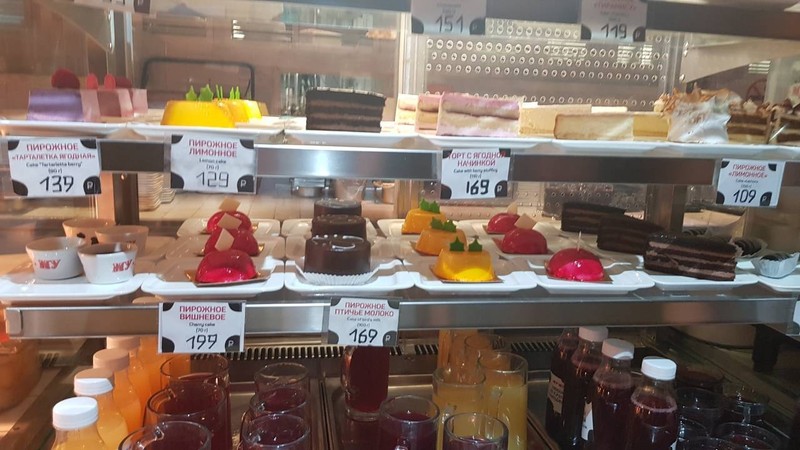Rimma Moskvitina, acting head of the Export Promotion Centre of Russia’s Altai region, said that many Russian enterprises are using the slashed import tarriffs under the Vietnam- Eurasian Economic Union (Armenia, Belarus, Kazakhstan, Russia, and Kyrgyzstan) Free Trade Agreement to boost their exports to Vietnam. The FTA took effect in October 2016.
“The FTA can help Russian businesses minimise risks of trade barriers and benefit from very low import tarriffs in Vietnam,” she said.
Two weeks ago, a delegation of Russian exporters visited Vietnam in search of local partners to distribute their products here, such as farm produce, foodstuffs, industrial equipment, fuel additives, petrochemical products, and energy equipment.
For example, in 2015, Gammer Alexandr, sales director of Barnaul Boiler Plant, LLC, came to Vietnam to look for Vietnamese partners. And now he has returned to the country for the same purpose, following the reductions in import tariffs for his company’s products induced by the FTA. The products include energy fittings for steam and water, such as stop valves, protection fittings, and control valves.
“Now we are here in Vietnam to seek manufacturing companies ultilising direct (sharp) steam, such as energy-generating companies (power plants), especially the Pha Lai power plant, installation companies in the power industry, for example Lilama Corporation,” Alexandr said. “Other partners can be iron and steel plants, oil refineries, and sugar factories.”
In another case, Mahnakov Oleg Nikolaevich, representative of Rikon Ltd., Co., also sees the FTA as one of the major drivers for Rikon to come to Vietnam to look for import partners of its agricultural products, including wheat, feed, barley, oat, pea, sunflower, and processed cereals and oil crops.
Under the FTA, Vietnam has promised to eradicate import tariffs on many agricultural products from the union after the agreement takes effect, such as wheat, beef, and milk products. In 2019, Vietnam will also do the same for canned meat and canned fish imported from the union. By 2021, the country will do the same for the union’s assorted chicken and pork products.
In addition to expanding their business presence in Vietnam, at present, Russian firms are also pushing its plans to invest in Vietnam to cash in on the FTA’s benefits.
For example, Russia’s automaker GAZ Group said its commercial vehicle lines have been enjoying a tax reduction since October of 2016. GAZ used to be famous in Vietnam via its brand names such as Volga, and GAZ 53 and 69. With the tax exemption, GAZ is expecting that it can rebuild its customer base in Vietnam.
Under the FTA, lorry import tariffs will be reduced from an average of 17 per cent now to 0 per cent by 2025.
Since October 2016, this company has been exporting its completely-built units and spare parts to Vietnam thanks to the FTA.
GAZ president Vadim Sorokin also said, “We are interested in transferring high technology to Vietnamese partners, so that we can design vehicles on the spot. Also we will develop our customer networks, technician training programmes and auto maintenance systems in Vietnam.”
Other auto firms such as Ulyanovsky Avtomobilny Zavod and KAMAZ have also been preparing to export their vehicles to Vietnam soon.
It is expected that until 2019, the tax reduction will enable each of the Russian auto exporters to save more than US$50 million per year.
Russian Ambassador to Vietnam K.V.Vnukov said that the FTA is the first to be signed by EAEC with a foreign nation. It reflects the bloc’s special trust and real partnership with Vietnam.
The VEFTA has brought about positive results. Trade turnover between the Eurasian Economic Community and Vietnam rose by more than 30%, from US$4.3 billion in 2016 to US$5.9 billion last year. This positive trend has continued in the first months of this year. Encouragingly, the two-way trade structure has changed gradually, with greater balance and diversity in goods.
“Currently, within the VEFTA, we are compiling a system on e-recognition and the verification of goods origin’s, which will be applied later this year. The system will help significantly simplify customs clearance procedures and verify goods origin’s, accordingly business costs will be reduced,” the ambassador said. “In general, Russia is expanding its investment presence in Vietnam. Thus we have begun implementing a bilateral deal on constructing automobile manufacturing and assembling plants in Vietnam, with Russia’s famous brands like KAMAZ and GAZ. Hopefully in the near future, these automobiles will reach the majority of Vietnamese consumers.”
PKF Magnus Ltd., Co., the Russian producer of agricultural machinery, is also awaiting the removal of import tariffs for its products under the FTA next year.
“We want to co-operate with Vietnam’s agricultural producers in distributing our attachments for MTZ and DT-75 tractors: front-end loaders, haylage forks, grain buckets, bulldozer blades, brushes, rotary diggers, and tedder rakes,” said Magnus’ commercial director Bobin Denis Evgenievich.
Nguyen Van Hai, head of the Vietnam Chamber of Industry and Commerce’s Board for International Relations, told Nhan Dan Online that after the FTA came into effect in October 2016, Vietnam-Russia bilateral trade turnover has annually soared by an average of 30%, hitting US$5.2 billion last year.
According to the Russian Export Centre in Vietnam, thanks to the FTA, more and more Russian agricultural products have been finding their way into the Vietnamese market, such as sunflower oil, pine nuts, walnuts, and cereals.
Many well-known Russian brands such as Magnit, Bimuka, Paritet, Kuban Wine, Fanagoria Wine, Igristye Wine, Makfa and Aston have also appeared in Vietnam.
As of August 20, 2018, Russia had 117 investment projects in Vietnam, registered with US$931.6 million. Meanwhile, Vietnam has 13 projects worth about US$3 billion in Russia, Vietnam’s Ministry of Planning and Investment reported.
















